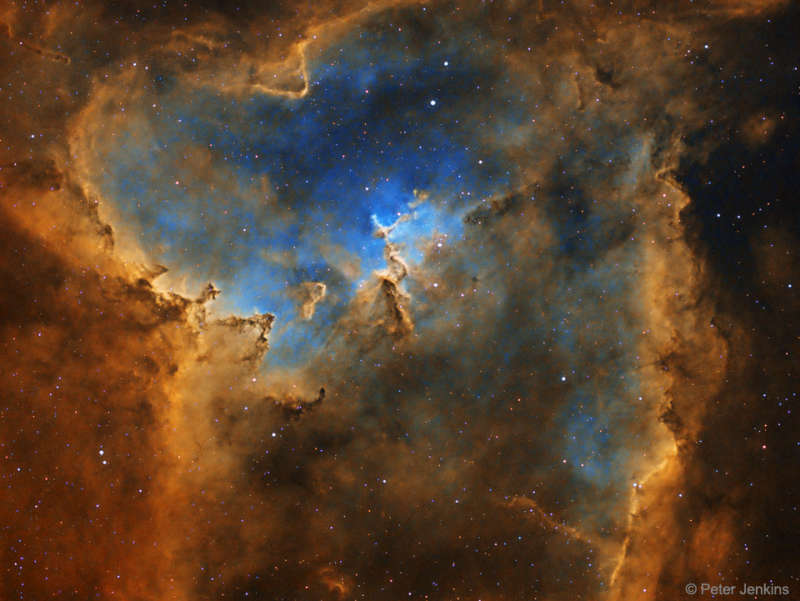
|
Credit & Copyright: Peter Jenkins
Explanation:
What powers the Heart Nebula?
The large emission nebula dubbed
IC 1805 looks, in whole, like a heart.
The nebula's glow -- as well as the shape of the gas and dust clouds -- is powered
by
by stellar
winds and radiation from
massive hot stars in the nebula's newborn star cluster
Melotte 15.
This deep telescopic image maps the pervasive light of narrow
emission lines from atoms of
hydrogen,
oxygen, and
sulfur
in the nebula.
The field of view spans just over two
degrees on the sky,
so that it appears larger than four times the diameter of a full moon.
The cosmic heart is found in the constellation of
Cassiopeia, the boastful
mythical Queen of
Aethiopia .
|
January February March April May June July August September October November December |
| ||||||||||||||||||||||||||||||||||||||||||||||||
NASA Web Site Statements, Warnings, and Disclaimers
NASA Official: Jay Norris. Specific rights apply.
A service of: LHEA at NASA / GSFC
& Michigan Tech. U.
Based on Astronomy Picture
Of the Day
Publications with keywords: Heart Nebula
Publications with words: Heart Nebula
See also:
